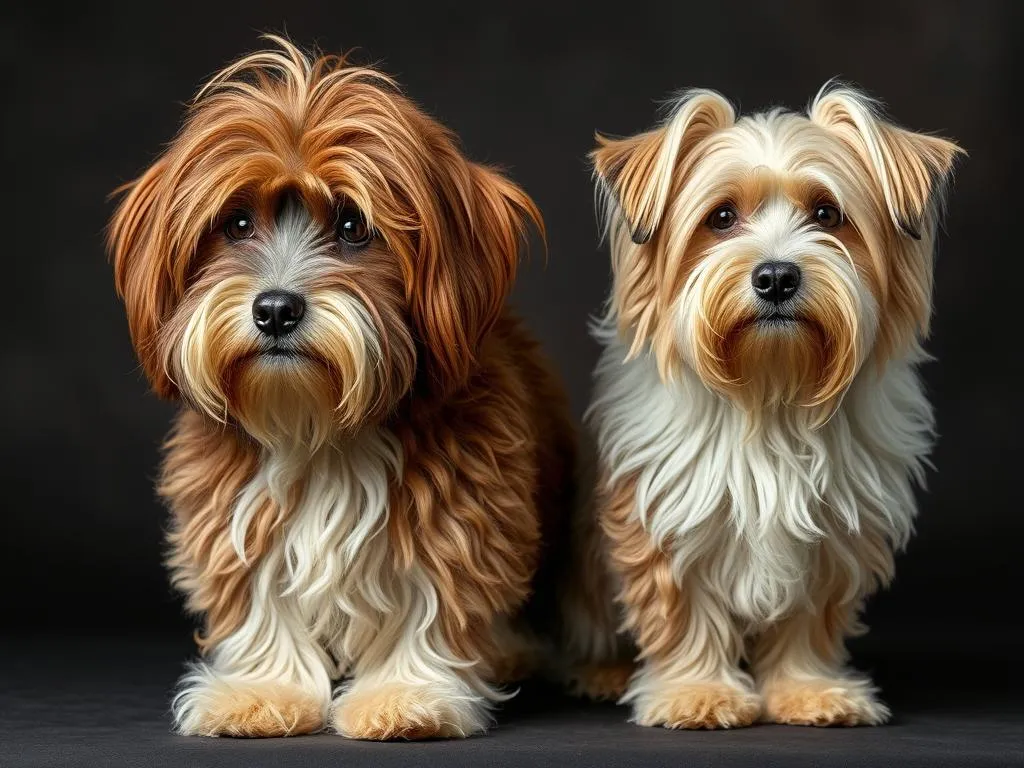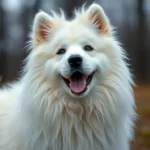
Shaggy dog breeds are some of the most endearing and visually striking pets you can find. With their long, fluffy coats and unique personalities, these dogs have captured the hearts of many dog lovers around the world. Understanding these breeds is vital for anyone considering adding a furry friend to their family, as different breeds come with varying needs and characteristics.
Understanding Shaggy Dog Breeds
Characteristics of Shaggy Dog Breeds
Shaggy dog breeds are typically characterized by their long, often tousled fur that provides them with a distinctive appearance. Their fur can range from soft and silky to coarse, giving each breed its unique texture. Sizes vary from small, like the Lhasa Apso, to larger breeds like the Old English Sheepdog.
In terms of behavior, shaggy dogs often display a friendly and playful temperament. Many of these breeds are known for their loyalty and affectionate nature, making them excellent companions. However, some shaggy breeds can also be quite energetic, requiring regular exercise to keep them happy and healthy.
Popular Shaggy Dog Breeds
Several shaggy dog breeds have gained popularity for their charm and personality. Here’s a closer look at a few of the most recognized breeds:
-
Bearded Collie: Known for its joyful demeanor, the Bearded Collie is an energetic breed with a shaggy coat that requires regular grooming. Originating from Scotland, these dogs are intelligent and highly trainable.
-
Old English Sheepdog: With its iconic shaggy coat and gentle disposition, the Old English Sheepdog is a beloved family pet. These dogs are known for their herding instincts and adaptability to various living situations.
-
Afghan Hound: Distinguished by its long, flowing coat and elegant appearance, the Afghan Hound is both a stunning and independent breed. They have a unique personality and are often quite playful and affectionate.
-
Lhasa Apso: This small breed is known for its long, luxurious coat and charming personality. Originating from Tibet, Lhasa Apsos were bred to be companion dogs and are known for their loyalty and protective nature.
-
Shih Tzu: With their adorable face and fluffy coat, Shih Tzus are a popular choice for families and individuals alike. They are friendly, sociable, and adapt well to various living environments.
Benefits of Owning Shaggy Dog Breeds
Companionship and Loyalty
One of the most significant benefits of owning shaggy dog breeds is the companionship they offer. These dogs form strong bonds with their owners and are known for their loyalty. Whether it’s cuddling on the couch or accompanying you on walks, shaggy dogs thrive on companionship and are always eager to please.
Versatility in Lifestyle
Shaggy dog breeds are incredibly versatile, making them suitable for a wide range of living situations. Whether you reside in an apartment or a house with a large backyard, many shaggy breeds can adapt to your lifestyle. They can thrive with active families, singles, or even elderly owners, as long as their needs for exercise and companionship are met.
Unique Aesthetic Appeal
The visual appeal of shaggy dog breeds cannot be understated. Their fluffy coats often draw attention and admiration from passersby. Grooming these dogs can also be a fun and rewarding experience, allowing owners to bond with their pets while maintaining their striking appearance.
Care and Maintenance of Shaggy Dog Breeds
Grooming Needs
The grooming needs of shaggy dog breeds vary widely, but most require regular attention to keep their coats healthy and looking great. Depending on the breed, grooming can range from weekly brushing to professional grooming every few months. Essential tools include slicker brushes, combs, and sometimes clippers for certain breeds.
Regular grooming is crucial not just for aesthetics but also for the health of your dog. Matting can lead to skin issues, so it’s essential to establish a grooming routine early on.
Health Considerations
Like all dog breeds, shaggy dog breeds may be prone to specific health issues. Common problems can include hip dysplasia, eye conditions, and skin allergies. Regular veterinary care and preventive measures, such as vaccinations and dental care, are vital in ensuring your shaggy companion remains healthy.
Exercise Requirements
Many shaggy dog breeds have moderate to high exercise needs. Daily walks, playtime, and mental stimulation are essential to keep them engaged and healthy. For example, Bearded Collies and Old English Sheepdogs thrive with plenty of exercise, while smaller breeds like Shih Tzus may require less intensive activity. Tailoring exercise routines to suit your breed’s needs will promote their overall well-being.
Training Shaggy Dog Breeds
Basic Training Techniques
Early socialization and training are crucial for shaggy dog breeds. These dogs can be strong-willed, so positive reinforcement techniques, such as treats and praise, work best. Consistency is key in training, as these dogs respond well to structured routines.
Behavioral Challenges
While most shaggy dog breeds are friendly, they can exhibit behavioral challenges, such as stubbornness or excessive barking. Identifying these issues early on and addressing them with proper training techniques can help mitigate problematic behaviors. For instance, engaging in regular obedience training can establish boundaries and reinforce good behavior.
Advanced Training Opportunities
Many shaggy dog breeds excel in advanced training opportunities, such as agility and obedience competitions. These activities not only provide physical exercise but also offer mental stimulation, which is essential for breeds that require more than just physical activity. Training can strengthen the bond between you and your dog and improve their overall behavior.
Choosing the Right Shaggy Dog Breed for Your Lifestyle
Assessing Your Living Environment
Before selecting a shaggy dog breed, it’s essential to assess your living environment. Consider factors such as space, activity level, and compatibility with children and other pets. Some breeds may thrive in active households, while others may prefer a quieter environment.
Time Commitment
Owning a dog is a significant time commitment. Be realistic about the time you can dedicate to training, exercise, and grooming. Each shaggy dog breed has different needs; understanding these will help you balance work, social life, and pet ownership effectively.
Adoption vs. Buying
When choosing a shaggy dog breed, you’ll need to consider whether to adopt from a shelter or purchase from a breeder. Both options have their pros and cons. Adoption can save a dog’s life and often comes with lower initial costs, while buying from a reputable breeder may provide a better understanding of the dog’s lineage and health history. Researching and finding reputable sources is crucial in either case.
Conclusion
In summary, shaggy dog breeds offer a unique blend of companionship, loyalty, and visual appeal. Understanding their characteristics, needs, and how they fit into your lifestyle is essential for a successful pet-owner relationship. The joy of owning a shaggy dog is immeasurable, and with the right preparation and care, they can become cherished members of your family. Always remember to consider lifestyle compatibility when choosing the right breed for you. Your fluffy friend is waiting to bring joy into your life!









